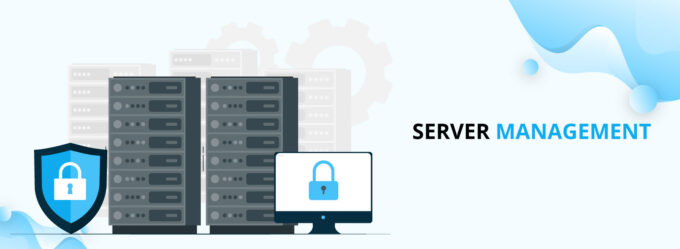Most of our IT functions depend on servers’ functionality in the digital age. But poor server functioning will lead to the collapse of your activities such as data storage and website hosting. It’s essential to maintain your peak server performance. Fortunately, performing server management activities guarantees optimal performance of your server.
What is server management?

Source:zimegats.com
Server management is a process that involves monitoring and maintaining your server to operate at optimal levels. The main objectives are to minimize downtime, secure the server environment, and ensure your server meets your needs. But for best server management, you must hire experienced experts, and you can learn more about this from pacgenesis.com.
Server management activities
- Setting up Servers: Setting up involves getting your hardware, installing software, adding the network to your server, and providing access to your server.
- Server configuration: Here you change your server default setting to fit your case.
- Server monitoring: It’s keeping an eye on your server activities and performances and identifying improvement areas.
- Server performance: Server performance requires you to identify any issues and provide solutions.
Server management basics
Sever management activities include the following server management basics
- Hardware management

Source:infonetworks.com
Your hardware performance is the core effective server management practice. If you don’t have reliable hardware, your server productivity will be adversely affected. Hardware has five components that require regular monitoring. They include,
- Central Processing Unit (CPU): The CPU is the brain of your server that performs calculations for programs to run. You must continuously monitor your CPU to prevent overuse. For instance, running the CPU at 100% is an overuse as you can’t perform additional tasks, and it increases the response time. But you can update and add more CPUs or remove unnecessary programs.
- Random Access Memory (RAM). RAM is your servers working memory. Compared to hard disks, RAM storage runs faster. Due to that speed advantage, programs run better in RAM. Therefore, you must consider increasing your server RAM storage for increased performance.
- Hard Drive: Hard drive is your server’s permanent storage. The hard drive saves your programs and data even when your machine shutdown. However, as your hard drive reaches its maximum capacity, its performance decreases. You should ensure sufficient space by adding more drives or deleting unwanted data.
- CPU Temperature: Your server can generate abnormal heat. They’re fitted with wired thermometers to know your CPU thermometer. If your thermometer is hugely high, you should shut down your server. Also, monitor fun speeds to prevent such abnormal temperatures.
- Operating Environment. In addition to server temperature, you need to consider the operating environment of the server location. Keep your server room at proper temperature and humidity.
- Software management

Source:pinterest.com
Use basic practices for your existing software for both performance and security. Again, consider uninstalling unwanted software.
- Security
Security is a crucial server management practice for your data and network security. Encrypt your sensitive data and put firewalls to stop unauthorized traffic. Additionally, use passwords and install up-to-date antiviruses.
- Backups
Losing data is the worst experience you can get from a server. Therefore, effective server management needs to have backup data storage and backup power for your server.
Benefits of server management services
- Skills and experience. Training or recruiting the right people with the right server management skills and experience is difficult. But you could achieve it quickly by outsourcing to qualified experts. You will have better server management and advice, and informed suggestions.
- Cost-cutting. Since server management services require a monthly or yearly subscription, you’ll have more cost benefits than hiring internally.
- Security. With the help of server management services, you can remove unwanted viruses or any other cyber threats from your server. Also, such an expert will ensure regular monitoring and identify any suspicious threat.
- Server audit and updates: Having the best server management guarantees you the prevention of server malfunction. IT experts ensure your server is backed up and regularly tested for integrity. Moreover, you’ll be able to recover your data after any disaster. Additionally, you’ll be able to plan future strategies with the help of server audit reports.
Features of server management tools

Source:manageengine.com
Although not all server management tools are similar, here are the standard features you’ll consider.
- Coverage. After identifying your preferred server and applications, you’ll need to choose a tool covering all types of servers and applications.
- User interface. Although you can do essential server management through the terminal, the terminal can’t handle complex functionalities. Therefore, you’ll need an intuitive user interface tool to perfume advanced management tasks.
- Support. Server management is a complex process, so support is essential.
- Alerting. Choosing a tool that can set thresholds and send alerts of those limits is essential.
Role of server management tools
- Better server alert Accuracy
- Improved and automatic threat detection
- Decreased human intervention
- Improved data collection.
Server maintenance tips
- Check your disk usage
Checking your disk usage involves deleting old logs or outdated software versions you no longer need. Try to keep your server without unnecessary to avoid security issues. Again, you’ll achieve a faster recovery time by having more minor data on your disk.
Alternatively, you can add more space to your disk to hold your excess data. But don’t let your disk usage reach 100%, as your server might stop responding and lose data.
- Verify your backup’s performance
Before performing any tasks on your server, ensure your backup system operates. To be sure, run some test recoveries before making changes or deleting data. Also, choose your back location and ensure it’s running or capable of the task.
- Identify hardware errors

Source:geeks2you.com
To identify any hardware problems, you’ll have to check the system logs. Identify errors such as overheating, read errors, or network failure, especially if your system is not working within its range.
- Improve server utilization
You must constantly review the server’s disk, CPU, RAM, and network utilization. Such practices help you know your server limits, and you can add resources to your server to surpass the limits.
- Review your system security
A regular server security review is essential. You’ll be able to identify any potential risk and timely OS updates. Additionally, change your passwords periodically to ensure authorized access is maintained.
Any of your IT functions rely on your server performance. The key to outstanding performance is server management and monitoring by professionals. Therefore, ensure regular server management for minimized downtime and overall server performance.

